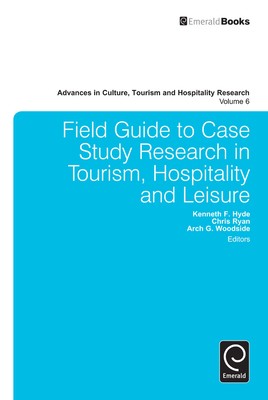
- We will send in 10–14 business days.
- Publisher: Emerald Group Publishing
- ISBN-10: 178052742X
- ISBN-13: 9781780527420
- Format: 16 x 23.1 x 4.8 cm, hardcover
- Language: English
- SAVE -10% with code: EXTRA
Field Guide to Case Study Research in Tourism, Hospitality and Leisure (e-book) (used book) | bookbook.eu
Reviews
Description
This field guide provides methods and studies on how-to-do case study research in natural settings. A truly international guide, this text is ideal for those studying and conducting case study research in tourism, hospitality and leisure disciplines. It provides a comprehensive and practical account of how to describe, explain and predict both individual and group case behavior, at the same time explaining behavior among a set of cases relevant to a specific context. This guide embraces and extends Herbert Simon's (Nobel Prize in Economics recipient) insight that a decision results from the conjoining two antecedents in human behavior: cognitive processing of an individual or group and a given context or problem framing. Divided into six parts, this guide includes chapters on: analysis of texts; how-to-do executive interviews; field interviewing in international contexts; stakeholder participatory research; researching indigenous and marginal peoples; and cross-case analysis. The chapters increase skills and understanding of culture, tourism, and hospitality behavior through analysis of the four principle objectives of case study research: accomplishing accuracy; achieving generality; reporting complexity and broad coverage; and achieving impact for improving the individual condition, client, and/or society.
EXTRA 10 % discount with code: EXTRA
The promotion ends in 15d.15:34:41
The discount code is valid when purchasing from 10 €. Discounts do not stack.
- Publisher: Emerald Group Publishing
- ISBN-10: 178052742X
- ISBN-13: 9781780527420
- Format: 16 x 23.1 x 4.8 cm, hardcover
- Language: English English
This field guide provides methods and studies on how-to-do case study research in natural settings. A truly international guide, this text is ideal for those studying and conducting case study research in tourism, hospitality and leisure disciplines. It provides a comprehensive and practical account of how to describe, explain and predict both individual and group case behavior, at the same time explaining behavior among a set of cases relevant to a specific context. This guide embraces and extends Herbert Simon's (Nobel Prize in Economics recipient) insight that a decision results from the conjoining two antecedents in human behavior: cognitive processing of an individual or group and a given context or problem framing. Divided into six parts, this guide includes chapters on: analysis of texts; how-to-do executive interviews; field interviewing in international contexts; stakeholder participatory research; researching indigenous and marginal peoples; and cross-case analysis. The chapters increase skills and understanding of culture, tourism, and hospitality behavior through analysis of the four principle objectives of case study research: accomplishing accuracy; achieving generality; reporting complexity and broad coverage; and achieving impact for improving the individual condition, client, and/or society.


Reviews